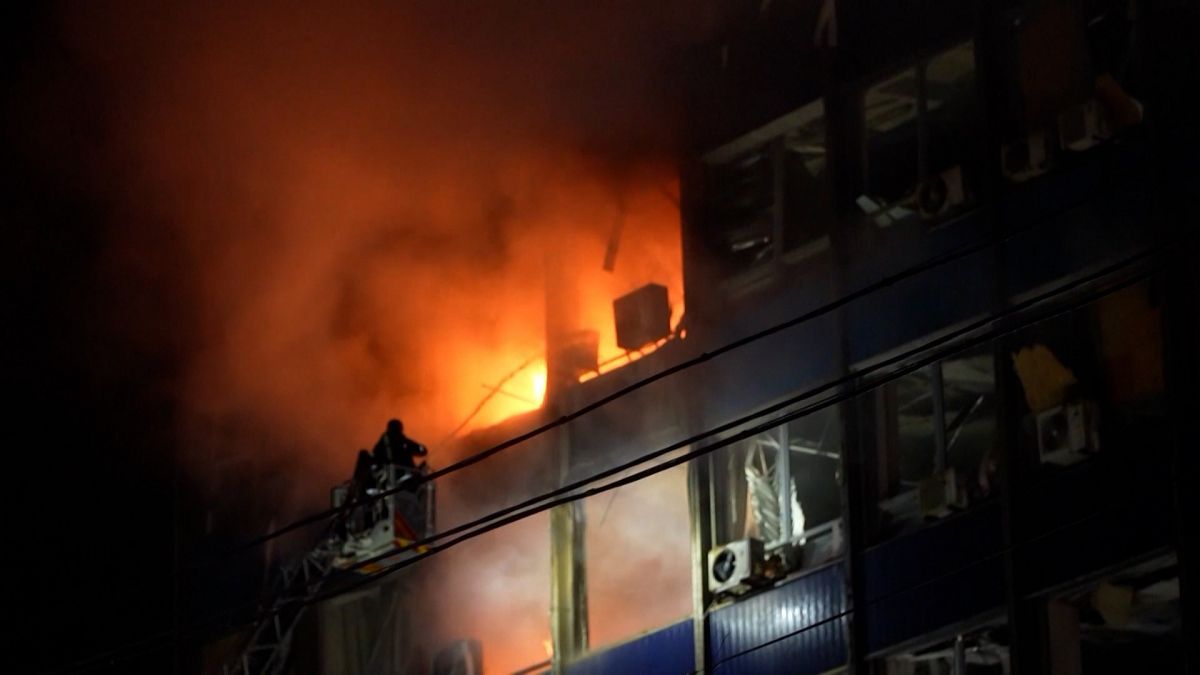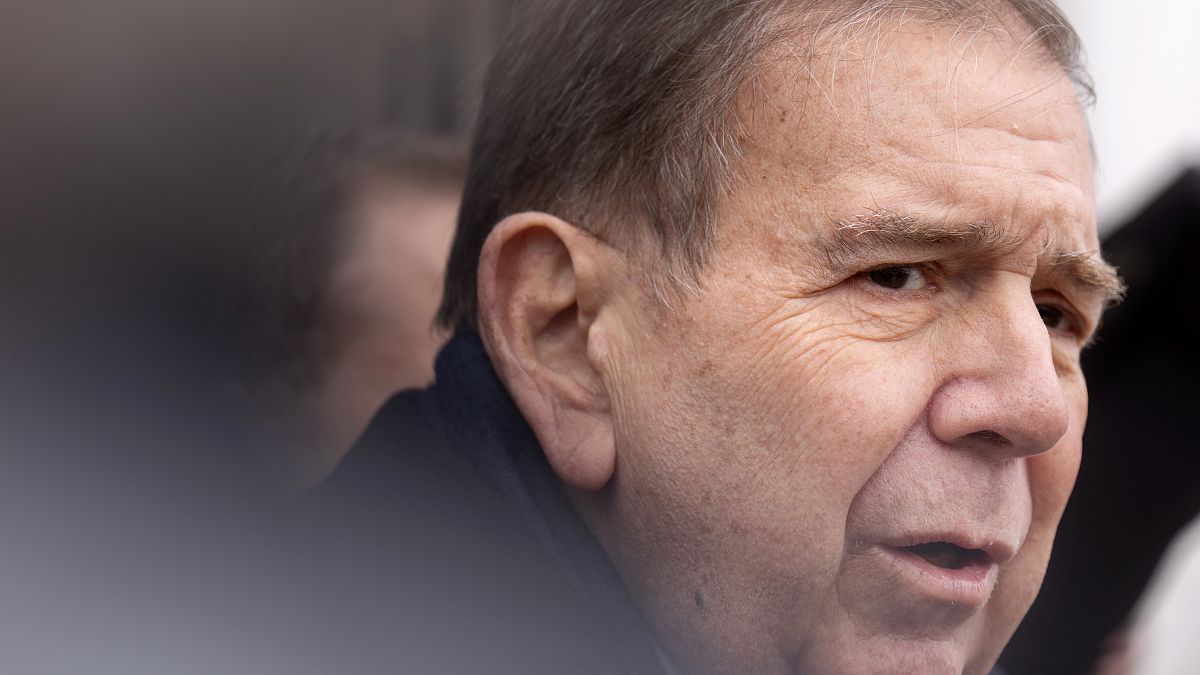The establishment parties are taking the chance to sweep up votes while Sinn Fein struggles to regain its footing.
As recently as a year ago, Ireland was preparing for what once seemed unthinkable: a government led by Sinn Fein, the nationalist party that served as the political wing of the Provisional Irish Republican Army (IRA) during the conflict known as the Troubles.
But while Sinn Fein has made great strides in Northern Ireland, where it is now the largest party in the Assembly in Belfast, its image as a government-in-waiting in the Republic has collapsed.
And now, there are signs that the country's traditional establishment parties may be about to buck a global trend of elections going against incumbents and instead maintain their grip on power.
So who's in the running, what are the key issues, what's expected to happen?
Coalition arithmetic
Ireland is coming off four years under a mostly centrist coalition government led by longtime rival parties Fine Gael and Fianna Fáil, the first time the two have governed together. Supported by the Greens and several independents, the coalition has a majority of just one in the Irish parliament, or Dáil.
After the last election, Fianna Fáil's Micheál Martin and Fine Gael's Leo Varadkar negotiated a deal under which they would alternate their terms as prime minister, or Taoiseach, reflecting the fact that Fianna Fáil had won only two more seats than Fine Gael.
Varadkar resigned from office without warning this summer and was succeeded by his Fine Gael colleague Simon Harris, who has since become known as the "TikTok Taoiseach" for his exuberant social media presence.
Both Fine Gael and Fianna Fáil are now hoping that they may keep enough seats to keep the arithmetic of the centrist-plus-Greens coalition roughly the same — and perhaps make enough gains that they will no longer have to rely on each other.
There are also a number of parties on the left or centre-left whom either side might try and entice to put together a coalition with a different complexion, notably Labour and the Social Democrats.
How to spend it
The election was called shortly after Ireland and Apple lost a court case brought by the European Commission, after which the EU Court of Justice ordered the tech giant to pay €13 billion to the Irish treasury to compensate for years of ultra-low taxes.
The court determined that the rock-bottom rates charged by the Irish government constitute an unlawful subsidy.
Embarrassing though the fine may be, it also sends billions of euros to the treasury at a time when Ireland has numerous expensive problems to address.
Among these are the prospect of serious transatlantic economic instability following Donald Trump's re-election as US president, something that would compound the knock-on effects of economic problems in Eurozone powerhouses and commodity price shocks driven by conflicts in Ukraine and elsewhere.
Harris has proposed setting aside €50 billion a year as a fund to bolster the public finances against the impact of sudden problems. There is also pressure on the government to spend more on public services.
But top of the list for many voters is the single most pressing domestic issue Ireland has faced in years: a nationwide housing crisis.
After overexuberant construction and mortgage lending helped crash the Irish economy as part of the 2007-2008 financial crisis, house-building slowed dramatically. Coming after the reversal of Ireland's decades-long net emigration trend, the upshot has been that there are simply too few homes to house the country's growing population and people moving there.
It has become one of the defining issues of Irish public debate — but as Sinn Fein have found out, it has also made coalition-building on the left much harder.
Caught in the middle
Unusually for a European country, Ireland does not have a strong right-wing populist party with any chance of holding the balance of power. However, far-right influencers have made a concerted effort to stir up a grassroots movement against immigrants and asylum seekers — particularly those from Muslim countries.
Many asylum seekers are housed in temporary accommodation, including previously shuttered hotels and retrofitted buildings, sometimes in small towns where their presence is highly conspicuous. A significant number have ended up sleeping in tents on the streets of central Dublin.
This has coincided with the intensification of the long-running housing crisis, and online far-right agitators — some domestic and some foreign — have spotted a chance to exploit it, spreading false claims that refugees and foreigners are being prioritised over Irish citizens.
Having started by exploiting anger against housing inequality, this has developed into an explicitly racist discourse about the supposed "replacement" of the white, gaelic Irish population, with hashtags like #IrelandfortheIrish spreading on moderation-light platforms like X and Telegram.
Yet in a turn that cuts against the European trend, it is Sinn Fein and not the incumbent government that this political tectonic shift has hit the hardest.
The party's vote was long concentrated in working-class communities, but in recent years, it has grown its coalition by appealing more and more to educated urban graduates and professionals. This latter group finds appeal in Sinn Fein's left-wing internationalist politics — including its explicit support for refugees.
But after a poorer-than-expected performance in this summer's European elections, the party has tried to sharpen its immigration pitch while still hewing close to its left-wing principles.
"Sinn Féin is clear that our migration policies must be decided by an Irish government, not by the European Union," the party proclaimed in a policy document published this summer. "Our perspective on migration is informed by our Republican values and principles — equality, economic and social justice, sovereignty, anti-racism and anti-colonialism."
And in a recent interview with the Irish Independent, leader Mary Lou McDonald specifically pushed back on what she said was government condemnation of working-class communities that had seen protests against the setup of asylum seeker housing centres.
“I think the government kind of used this ‘people want to veto’ line, to kind of hide behind it because they hadn’t gone in and they hadn’t done the work to actually go and talk to people in communities," she said.
"We need to be careful not to slip into an analysis that we all went to bed one night grand, and we woke up the following day and the entire country was racist. That didn’t happen."
Caught on camera
But Sinn Fein is far from the only party with problems as the campaign reaches an end. Harris has spent days trying to recover from a major gaffe that appears to have affected his party's polling at the final hurdle.
During a campaign stop at a supermarket in County Cork, Harris was confronted by a disability care worker who asked him why his government was not offering people in her position more support.
His dismissive response to her was caught on video and drew a storm of criticism, turning into a multi-day news cycle that forced Harris to apologise — and now, he is having to insist he is not aware of anyone on his team contacting national broadcaster RTE to demand that it stop showing the clip of the incident.
The supermarket episode shows that potential for a surprise is always there, and it appears to have helped damage Fine Gael's polling; the party now sits neck-and-neck with Sinn Fein, with Fianna Fáil slightly ahead. Yet it does not change some of the fundamentals of the post-election arithmetic.
Were Sinn Fein to somehow become the largest party in the Dáil or even pull ahead of one of the largest two, its sometimes hardline politics and long history with the IRA would make it an unacceptable coalition partner for many senior figures in the mainstream parties. (Varadkar has previously said that were his party to go into government with Sinn Fein, he would resign his membership.)
However, with Harris' gaffe leaving his party effectively tied with Sinn Fein, the other two main parties could yet find themselves losing just enough seats that they have to widen their coalition even further.
Whatever happens, it may be some time before the full picture becomes clear. The Irish electoral system includes multi-member constituencies and transferable voting. While the polls will close at 10pm local time on Friday, the counting will not begin until the following morning — and in some seats, it may go on through the weekend.

 1 month ago
16
1 month ago
16






 We deliver critical software at unparalleled value and speed to help your business thrive
We deliver critical software at unparalleled value and speed to help your business thrive






 English (US) ·
English (US) ·